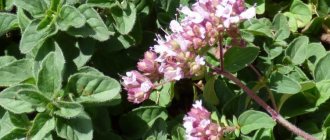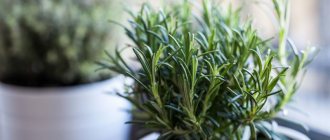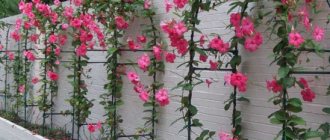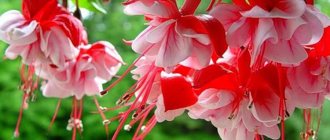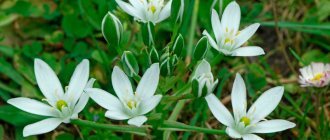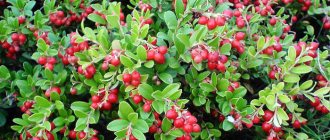Planting and caring for irga in the open field will not be difficult even for novice gardeners. Despite this, it is quite rare to meet her in garden plots. And this is a big mistake. It is unlikely that another fruit tree or shrub can compare with it in terms of ease of cultivation. Irga is resistant to cold weather and easily endures the most severe winters. It grows on all types of soil and requires very little maintenance. She is not touched by pests, and she practically does not get sick. Irga bears fruit abundantly and annually, and its berries are not only tasty, but also very useful.
Types and varieties of plants
In nature, there are about 25 species of irgi, but only a few have been introduced into the culture, and not all of them give high-quality berries.
Irga is spiky.
This is an ornamental tree or bush, covered in spring with white or pale pink flowers. Differs in resistance to pests and diseases, excellent frost resistance, but this is where the dignity of spicata ends. Her berries are small and of a mediocre taste, although they contain a lot of sugars. This species has no cultivated varieties.
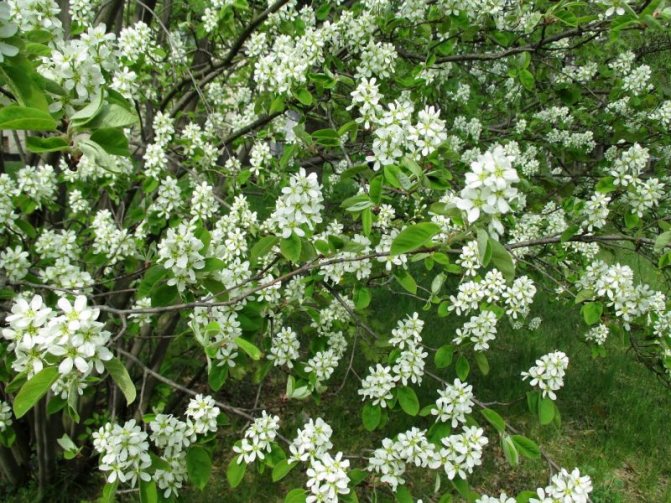
Irga blood-red.
The bush grows up to 3 m. The flowers are quite large, have elongated petals. Fruits are medium-sized, ripen at a later date. A lot of juice is obtained from them, while it is difficult to obtain it from fruits of other species. The berries taste mediocre, with the exception of the Success variety. His berries weigh up to 0.8 g. Their sweet and sour taste is estimated at 4.6 points when tasting, which is a good indicator.
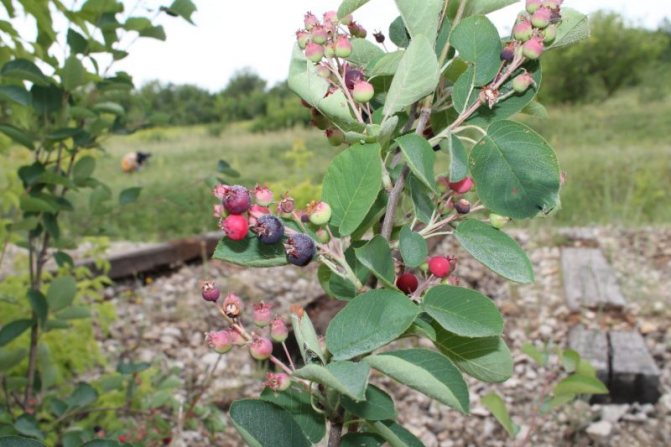

Irga canadian.
This is a bush up to 6 m in height or a tree that is even higher - up to 10 m. When blooming, the leaves are pubescent and the plant appears silvery. It is very decorative at the time of flowering, completely covered with tassels of white flowers. Forms tasty and large fruits with a balanced content of acids and sugars, but there are not many of them in the cluster. All bred varieties, like the species itself, are distinguished by good winter hardiness, but sometimes they freeze slightly in harsh winters. The most popular varieties are: Slet with large and tasty berries, Tradition, as well as Honey Wood with very sweet fruits and Parkhill with sour fruits. The fruits of the canadensis are very fond of birds, from which the crop must be protected.
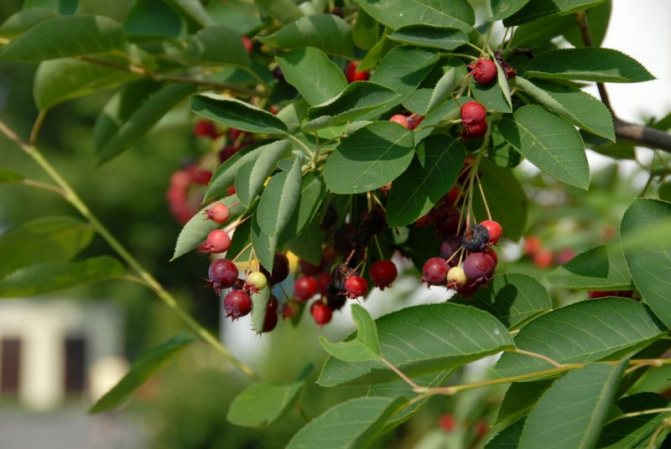

Irga alder.
In the middle lane, a shrub with a height of 2 to 4 m. It blooms with white flowers since the third decade of May. Berries weighing up to 2 g, in a brush there can be up to 14. The crop gives in amicable manner, it can be harvested in 2 times. The berries have an excellent taste, the content of acids and sugars is harmonious. The shrub is unpretentious, but in frosty winters, the tips of the shoots freeze slightly. The most interesting varieties: Smokey, from the berries of which an excellent wine is made, Altaglow with aromatic fruits, Foresburg with very sweet berries, Mandan with juicy fruits.
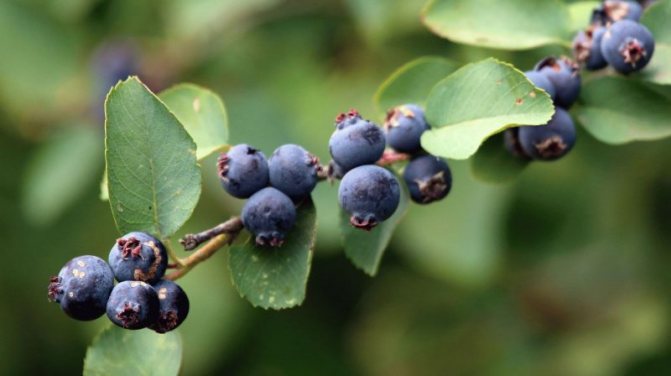

Recently, the first Russian variety, bred at the Michurinsky Institute, - Starry Night, was given for testing.
He successfully passed them, entered the State Register of Breeding Achievements in 2019 and is recommended for cultivation in all regions of our country.
Apple family
The irga plant belongs to the apple family - it is easy to guess about this during the flowering period, which falls on the end of May - beginning of June. In these two weeks, the shrub pleases the eye with its extraordinary flowers of white and beige shades, and after that the yurga (or irga) berry itself begins to ripen.Photo of the fruit can be confused with black currant or black chokeberry. Indeed, as the berries ripen, they acquire a rich red or blue color.
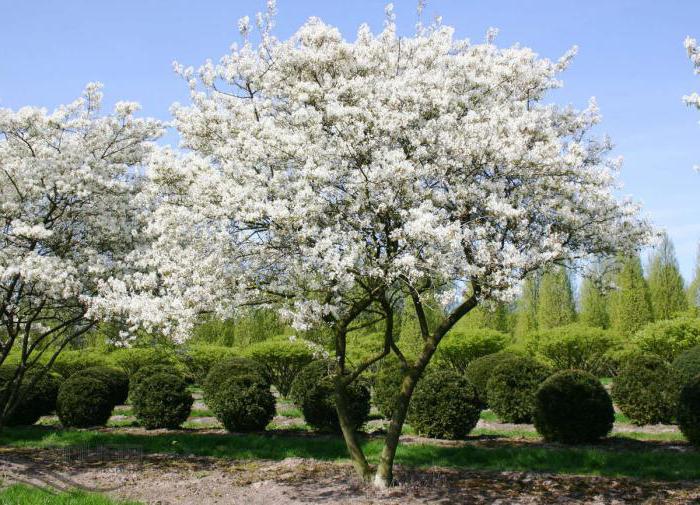

Harvesting also depends on the growing conditions, which begins in mid-July and ends in September. The berries are distinguished by a bluish bloom and taste - sweet with a slight sourness. It has long been appreciated by our feathered friends, so do not delay the harvest.
The shrub is quite common not only in garden plots, but also in forests. Many people rightly have a question about the benefits for pets. For example, can hamsters give irga berries? The answer must be sought from a veterinarian, because only a specialist determines the correct diet.
Features of growing irgi
This plant can rightfully be attributed to unpretentious. Most species are hardy. A powerful root system allows the plant to tolerate moisture and nutrient deficiencies. Irga is undemanding to the composition and fertility of the soil, calmly tolerates shading. It will exist in such extreme conditions, but if you want to get a decent harvest, you need to provide comfort to the irge: a lot of light, correct and timely feeding, as well as the obligatory formation of the crown.
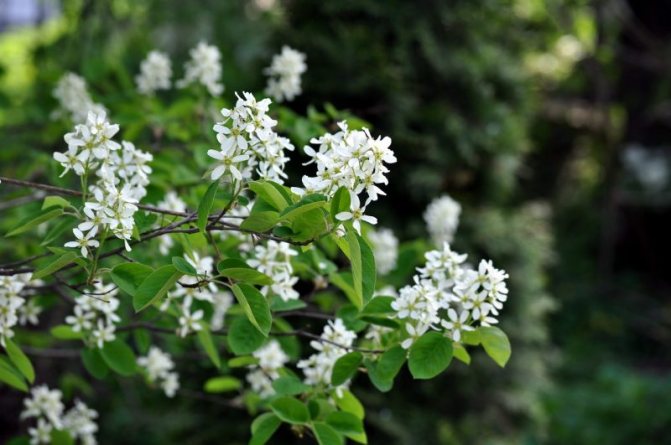

The trouble with irgi is its numerous root shoots. It is good for reproduction, but the plant thickens and, drawing off its strength, reduces the yield. Therefore, you need to fight it.
A storehouse of vitamins
It is a pity that not all gardeners know how the irga berry is useful. Its composition is in no way inferior to the already familiar fruit bushes:
- Ascorbic acid. It activates the production of collagen, strengthens the cardiovascular system, reduces the risk of cancer and is one of the main antioxidants.
- Vitamins of group B. Activate the work of brain cells, are responsible for hormones and metabolism, and also improve the transmission of nerve impulses.
- Flavonoids. They have a positive effect on the human body as a whole.
- Carotene. It is very important for vision, prevents the development of oncological diseases.
- Glycosides. Prevent the development of atherosclerosis, lower cholesterol levels.
- Organic acids. Provide a complete digestion process.
- Tannins. Strengthens blood vessels, is used to treat gastrointestinal disorders, bacterial infections.
- Pectins. They cleanse the body of decay products.
Landing in open ground
Irga tolerates transplantation well and takes root, but only if the root system is well preserved.
The choice of planting material
For planting, it is better to choose frost-resistant species and varieties that are distinguished by a high yield of delicious berries. If the irga is intended to create a hedge (and it turns out to be dense and decorative), then the yield does not matter so much. The age of the seedlings comes first. They have the best survival rate at the age of 1-2 years.
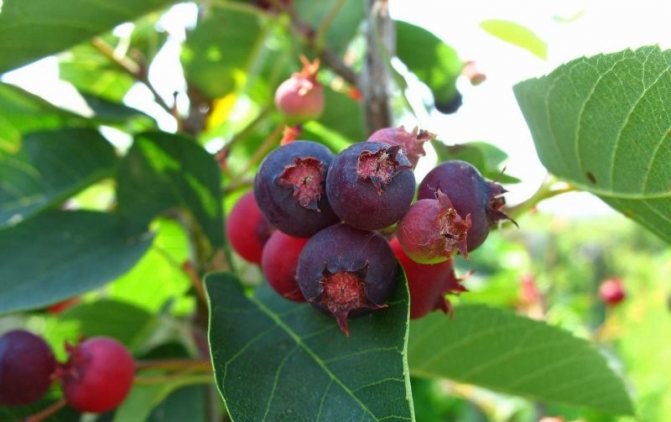

When choosing a seedling, pay attention to the following indicators:
- a healthy root system with no signs of drying out and rot;
- the stem of the seedling is well developed, the bark is intact and has a color characteristic of the variety.
Nurseries have closed-root seedlings grown in large containers. For planting, they are preferable. Such a plant will not waste time on restoring the root system damaged during transplantation, it will quickly take root and start growing. Container seedlings have no time limits for planting - they can be carried out throughout the growing season.
Soil preparation and site
Irga is a long-liver, so the place for planting it must be chosen deliberately, taking into account the growth of the plant in width and height, as well as its requirements for growing conditions.
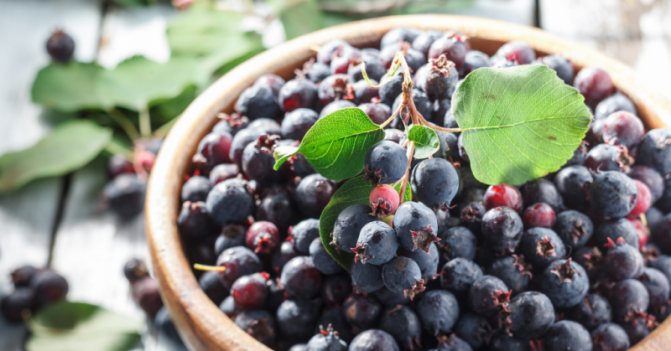

It must meet the following criteria:
- the place is chosen well lit, it is in this case that the yield will be maximum;
- the level of standing of groundwater is low;
- the mechanical composition of the soil should be light (sandy loam or loose loam with a high humus content), and heavy soils improve;
- soil acidity value from 6.5 to 7.
The soil is cleared of weeds. Better if the previous season she was kept under black steam. It is optimal to sow it with legumes that improve fertility. Before digging, up to 10 kg of well-rotted compost or humus and 40 g of potash and phosphorus fertilizers are applied to each square.
Landing times and rules
This berry crop is planted in early spring or late autumn. In the first case, the buds should not swell, and when planting irgi in the fall, the tree should already shed its leaves, but about 3 weeks still remain before frost - this is the time required for rooting. Each seedling requires a feeding area of up to 4 squares, so the optimal distance between them is about 2 meters. When forming a hedge, saplings of irgi are planted at a distance of 0.5-1 m from each other.
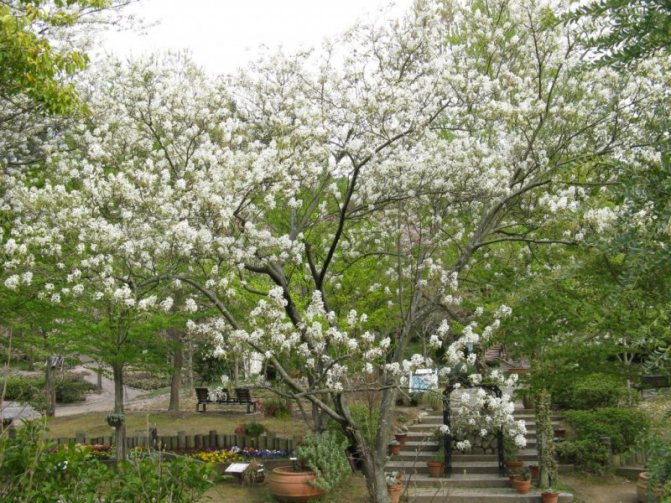

Landing Algorithm:
- dig a hole with a depth and diameter of about 60 cm (on heavy soils - about 70 cm), discarding the top fertile layer in a separate heap;
- for a hedge, dig a trench 40 cm wide and 30 cm deep;
- mix the top layer with a bucket of humus, adding 300 g of superphosphate and 200 g of potassium salt, which can be replaced with 1 kg of ash;
- a mound of the prepared mixture is poured at the bottom of the pit;
- a seedling is installed and the roots are carefully straightened; if there is damage, they are removed by sprinkling the cuts with crushed coal;
- cover the root system with prepared soil, without burying the root collar into it;
- a bucket of water is poured under the bush;
- mulch the soil with humus;
- if the root system is damaged during planting, the stem of the seedling is shortened by cutting it into 4-5 buds.
For winter
As we have already said, the harvest of irgi ends with the first autumn month. There are two ways to stock up on a miracle berry until next summer season.
- Drying. The fruits can be dried in the oven or in the sun, weather permitting. In the oven, the temperature should be no more than 60 degrees. If the design does not provide for the presence of fans, then slightly open the door to let out the moist air. Dried yerga looks and tastes like raisins - it can also be added to casseroles, compote, jelly or other desserts.
- Freezing. Place dry fruits on a small baking sheet in the freezer - for example, an ice shelf is suitable for this. Transfer to a regular bag after a few hours. Even after defrosting, the berries retain their freshness and useful properties.
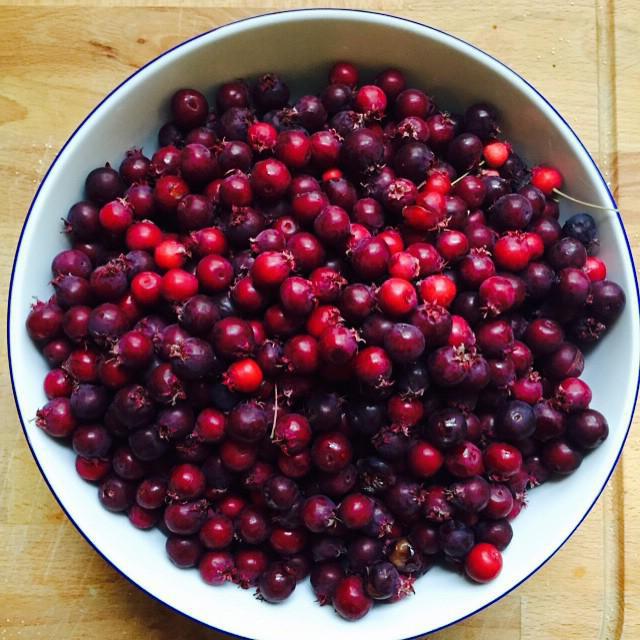

Outdoor care
Without careful care, the bush runs wild and the berry harvest falls. Therefore, all agrotechnical measures must be carried out on time and in full.
How to water irga?
An adult plant is drought-resistant and requires watering only in heat and in the absence of rain. At least 2 buckets of water are poured onto one bush to wet the entire root layer. A newly planted irga needs regular maintenance of soil moisture - it is watered weekly, pouring a bucket into each trunk circle. As soon as the young growth reaches 15 cm, you can switch to the watering regime for an adult plant.
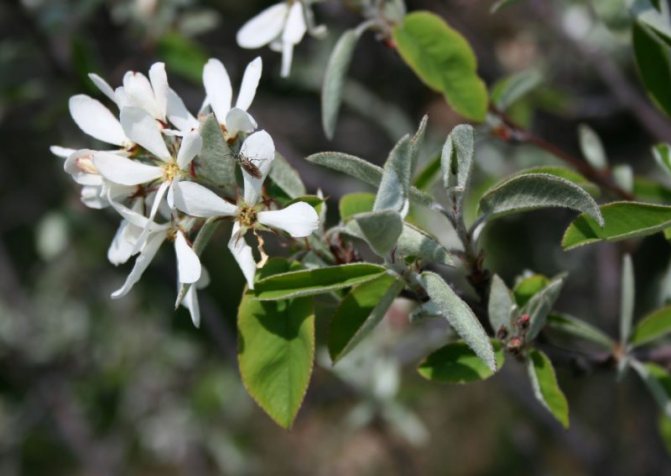

Top dressing and fertilization
The trees are fertilized the next year after planting. In the first half of summer, nitrogen-containing fertilizers are applied: 50 g of ammonium nitrate per 10 liters of water or organic matter in the form of a 10% solution of poultry droppings. This rate is given for 1 irgi plant aged 3-5 years.
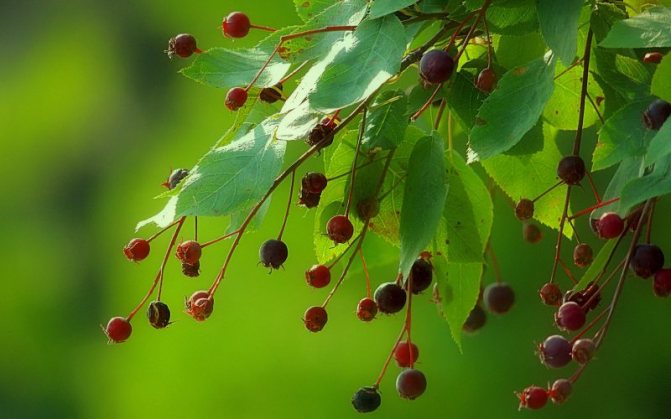

As the tree grows, the volumes of the applied solutions increase. Autumn feeding is needed to better prepare the plant for winter. It is made in early September, and in cooler regions in August. 300 g of superphosphate and 200 g of potassium sulfate are added to the trunk circle, followed by digging and watering.
In autumn, nitrogen fertilizers cannot be applied under the irga, otherwise the bush will leave weakened before winter.
Transplant and pruning
Irga is transplanted only if the original place for it was chosen incorrectly or it does not give an increase, and all other measures have already been tested. Actions and soil preparation are the same as for planting.


If the irgu is not cut off at all, fruiting will occur only at the ends of the shoots, the yield will noticeably decrease. How to form a plant? This is done in early spring, before sap flow has begun, so as not to injure the irga badly.
The tree and the bush are shaped differently. For a bush, it is enough to remove dry, damaged and thickening shoots. The tree also needs to shorten the vertically growing branches by ¼ of the length - this inhibits the growth of the crown in height, which is important, because it is difficult to pick berries from tall trees. Be sure to remove the resulting root shoots, leaving only the 2 strongest shoots.
Rejuvenating pruning is started at 8-10 years of age. A signal to it is a decrease in the length of annual growths to 10 cm. All thin and weak shoots are removed. Leave only 10 to 15 of the strongest so that they do not interfere with each other. The rest are cut into a stump. Sections are covered with garden varnish in warm weather and natural oil paint in cold weather.
How to care for in autumn, winter?
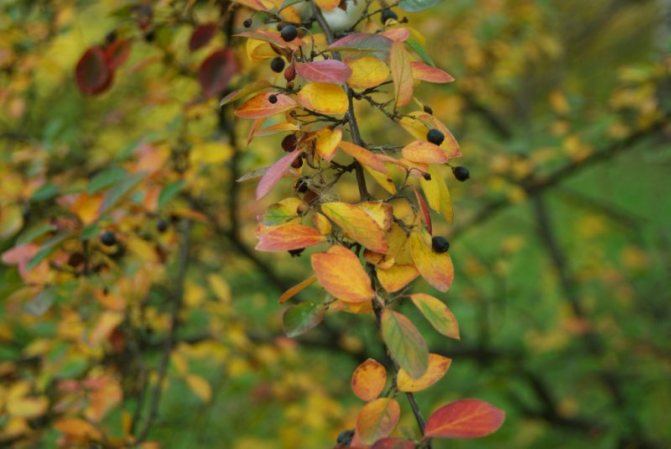

- In winter, the tree or bush does not require care - the snow will reliably preserve the plant.
- In the fall or at the end of summer, fertilizing with phosphorus and potash fertilizers is carried out.
- After leaf fall, water charging will be required, especially if the autumn is dry. In young plants, you can mulch the trunk circle with compost or humus to preserve the root system.
What to cook?
Jirgi berries are traditionally used to make preserves, jams and compotes. In addition, they make an excellent filling for pies or dumplings.
To make jam according to the classic recipe, we need:
- 1 kg of fresh berries.
- 1 kg of sugar. You can reduce the amount of this component by half, because yurga is a rather sweet berry.
- 3 g of citric acid.
The berries must be carefully sorted out and washed, and then sprinkled on a clean cloth. Transfer the dried fruits to a large saucepan (preferably with a non-stick coating), grind with a blender and add sugar.
We leave the berry-sugar mixture for at least three hours so that the juice has time to form. After that, over medium heat, bring the future jam to a boil, reduce the power and cook for another 30 minutes. Add citric acid at the end. We distribute the finished product in glass jars.
Reproduction of irgi
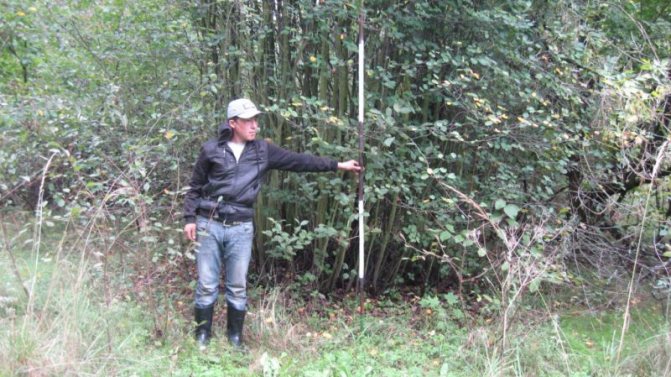

This plant is very easy to propagate. Both vegetative and seed methods are suitable.
- Seeds are selected from the largest ripe berries, washing them from the pulp and drying. The most convenient way is to sow on a growing bed before winter. After natural stratification and selection for survival, only the strongest plants will emerge in the spring. The sowing depth is about 2 cm. The distance between the rows is 20 cm. Irga emerges unevenly, sometimes only a year after sowing. Seedlings in the phase of 5 true leaves need picking.
- For vegetative propagation, basal shoots are chosen with a thickness of 0.5 cm and a height of up to 15 cm. They are planted on a distribution bed, taking away bushes no older than 6 years for dividing.
- Only annual growths are suitable for propagation by cuttings.
How to cut?
- shoots are cut in summer;
- the length of the handle is 6-7 cm;
- the bottom sheet is removed, the top one is shortened by half;
- the lower cut is treated with a rooting stimulator;
- planted in a cuticle under the film obliquely;
- maintain air humidity at 95%.
The rooting rate of cuttings is slightly more than 50%. Roots are formed after 20 days. After wintering, cuttings with roots are planted on a growing bed, and in the fall - on a permanent place.
Particularly valuable varieties are propagated by grafting on irga spikelet - the most persistent species.
A two-year-old seedling is chosen for the stock. Irgi grafting is carried out when the spring sap flow begins, but before the buds swell. The method of improved copulation is used.
Jam
Our next recipe will appeal to those trying to limit their sugar intake. Do you like Irga Berry too? Jam and a cup of green tea are the best options for a winter evening.
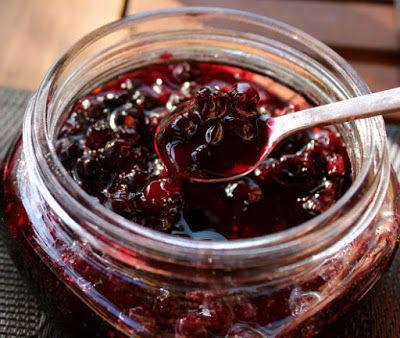

Ingredients for yergi jam:
- 300-400 g of sugar.
- 200 ml of water.
- 1 kg of berries.
- 2 g of citric acid.
Syrup must be made from sugar and water. Blanch the prepared irga for two minutes in boiling water, and then pour it into boiling syrup. Bring the sweet mixture to a boil and leave for 12 hours. Add citric acid and close in jars.
Such vitamin jam will come in handy during the seasonal epidemic of colds and flu.
What problems can there be when growing?
- If the leaves turn yellow or turn red even before the beginning of leaf fall, the plant does not have enough nutrition.
- The berries dry out on the bush before harvesting - insufficient watering.
- The tree grows poorly - lack of light, nutrition. Maybe this is with a thickened planting.
- If a tree does not bloom or bear fruit, then it is poorly looked after.
This is interesting: the benefits of irgi
Take with care
Doctors do not recommend using irgi fruits for individual intolerance and low blood pressure.
Some sources claim that it is highly undesirable to drive a vehicle while treating with yurga. In fact, a pronounced sedative effect is manifested when several kilograms of berries are consumed at once - it is quite difficult to do this, so there is no question of danger for drivers.
It is interesting that pregnant women are usually at risk, but in our case, the situation is different. For the prevention of varicose veins, expectant mothers happily refuse medications, because the irga berry becomes the main assistant.
Pests and diseases
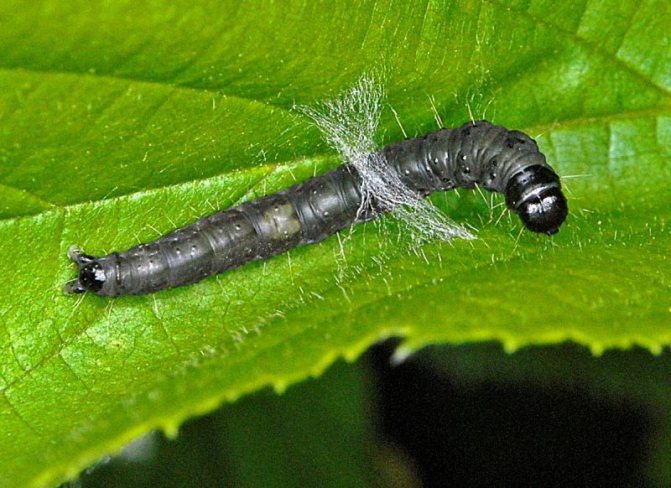

This plant has a lot of pests.
- The moth can seriously damage the leaves of the plant. This caterpillar is easy to see, and they fight it using trapping belts or insecticide treatment.
- The leaf roll is also a caterpillar. She rolls the leaves into a tube, which is why the plant may simply die. You can harvest the caterpillars by hand or spray the plants with insecticides.
- The apple moth gnaws at the leaves. To combat it, chlorophos and entobacterin are suitable.
Of the diseases for irgi, fungal diseases are dangerous: powdery mildew in the form of a white coating on the leaves and phyllostict - dark spots resembling rust. Fungicides are used against them, in particular Fundazol.
Medicine
Yurga is a berry, the benefits of which are manifested regardless of the method of its use. Fresh or prepared fruits bring a huge amount of important vitamins for the human body.
For the treatment of sore throat, it is advised to gargle with irgi juice. In addition, its astringent properties are useful for gastrointestinal disorders, inflammation and colitis.
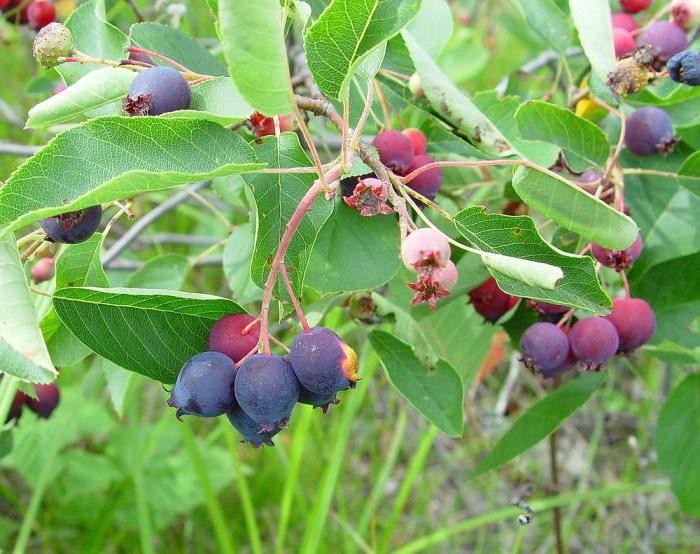

Irga reduces the level of harmful cholesterol in the blood, helps with atherosclerosis, vascular, kidney and liver diseases. The rich composition of berries strengthens the immune system, and also prevents the appearance of cancer and Alzheimer's disease.
With periodontal disease and stomatitis, rinsing with a decoction will help, and the juice is useful for disinfecting and accelerating the healing of purulent wounds. Yurga berry is indispensable for insomnia. It relaxes the nervous system and normalizes blood pressure.
After familiarizing yourself with the healing properties of this plant, you will probably be interested in what can be made from the berry of irgi. We will definitely tell you about the best recipes, but first - contraindications.
Pruning
For good fruiting in irgi, it is necessary to periodically cut off old and weak branches.When to cut the irgu? Work should be carried out in early spring before budding.
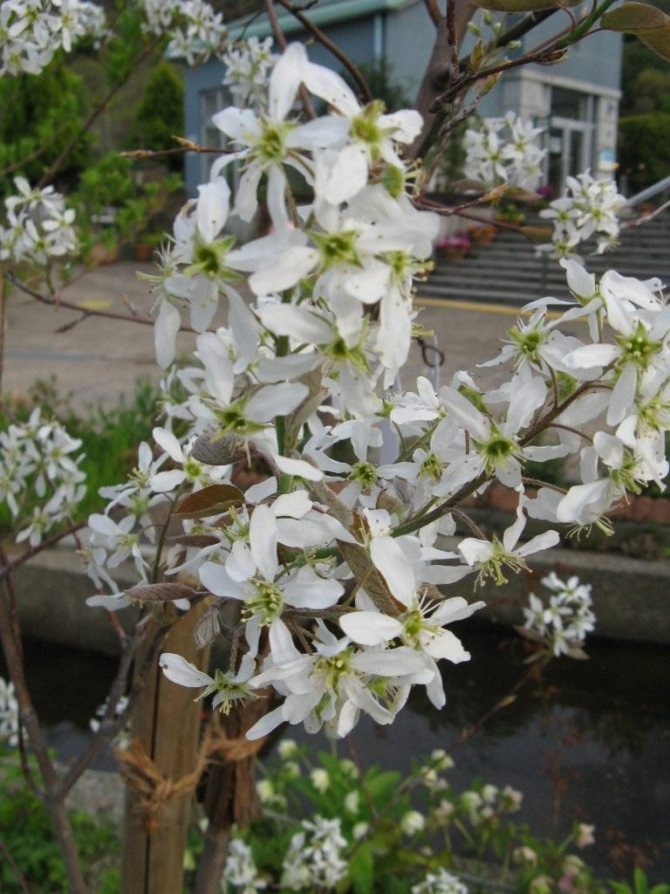

Old and weak branches, as well as the tops of a tree or irgi shrub are subject to elimination. Crown pruning is carried out in order to prevent branches from growing upward. Branches that thicken the bush are also subject to elimination.
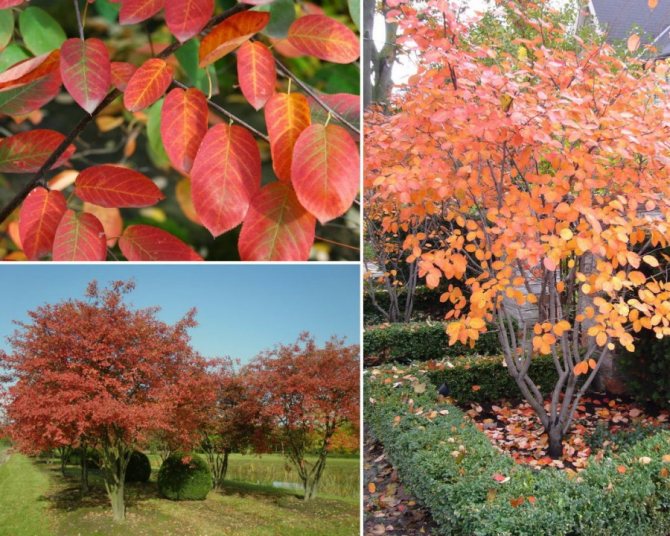

Fruit
During the fruiting period, small berries with pink barrels can be seen on the cinnamon. They are collected on one brush. The unripe fruits of most varieties of irgi are cream colored, and as they ripen, they acquire purple or purple colors. The berries have a pleasant taste. Their delicate sweetness and juiciness attract both young children and adults. They love to feast on the fruits of irgi and poultry, after which they carry the seeds of the plant throughout the district. Berries from the bush should be picked only when ripe, otherwise they will not have healing properties.
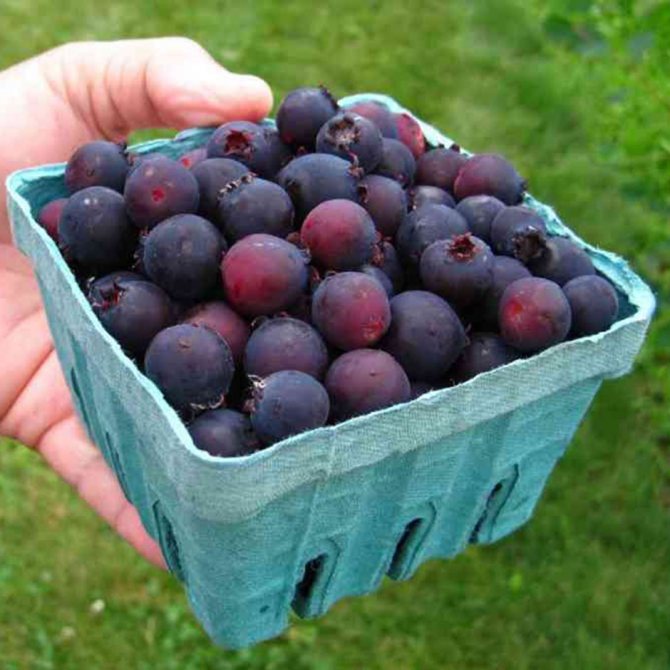

The fruit contains a huge amount of useful substances - dietary fiber (up to 25 percent), glucose and fructose, vitamins C, P, and group B, pectin and phytosterols, carotene, fiber, as well as various microelements.
On a note
In conclusion, we would like to give some important tips:
- Irga juice. It takes patience to get the healing liquid from the berries. Do not squeeze the juice right away - sprinkle the sirga on a newspaper in a cool place and wait a week. The berries will become more flavorful and juicy.
- Birds. As already mentioned, our feathered friends simply adore irgu. If you do not want to share a useful crop with them, then simply cover the shrub with a net.
- Know when to stop. When using any product from irgi, remember about its ability to lower blood pressure and its mild sedative effect.
Botanical description
Corinka is distinguished by abundant flowering, decorative fruits, exquisite autumn color of the leaves. The plant tolerates drought, cold, shearing well, undemanding to soil. It grows quickly, bears fruit every year.
The leaves are serrated along the edge, simple, round or oval, light green below, rich marsh above, deep burgundy or yellow-red in autumn.
Flowers are collected in thyroid racemes, placed at the end of the shoots. Numerous, white or cream colored. One pestle. Lower ovary. Abundant flowering, fruiting is observed on last year's top shoots.
Fruit with a bluish bloom, shaped like an apple, up to 10 mm in diameter. Has a reddish purple or bluish black color, edible, sweet. Ripening period - July-August.
Methods for breeding irgi: dividing the bush, root shoots, sowing seeds, cuttings. The growth of the bushes occurs by means of root suckers.
Common varieties of irgi: "Eltaglow", "Forestburg", "Smokley", "Pambina", "Northline", "Stardzhion", "Thyssen".
Several recommendations
Black currants, raspberries, gooseberries grow quite calmly next to the irga plant. Neighborhood with other plants, such as birch or Manchurian walnut, is not recommended. They depress irga and consume a lot of moisture.


Irga will not bring unnecessary trouble, will not take a lot of time, but she will decorate the garden plot and delight with the harvest of delicious and incredibly healthy fruits.
In addition, it is winter-hardy, so even Michurin at one time recommended this culture as a rootstock for apple and pear trees in the north.
Wine
One of the most difficult recipes that will require attention to detail. At home, you can also make wine from irgi.
For such a bold experiment, you will need:
- 2 liters of water.
- 1 kg of sugar.
- 2.5 kg of berries.
Procedure:
- Cooking syrup. We put the water on the fire, and after boiling, add sugar and do not forget to stir.
- We take unwashed and ripe berries (for fermentation) and squeeze out 1 liter of juice. Then combine the juice with syrup and pour it into a glass bottle.We put on a medical glove on the neck to prevent air from entering.
- We put the bottle in a warm place and forget about it for three weeks. Clarification of the liquid indicates the end of the fermentation process.
- After three weeks, we filter the wine and bottle it, and then we insist for four months.
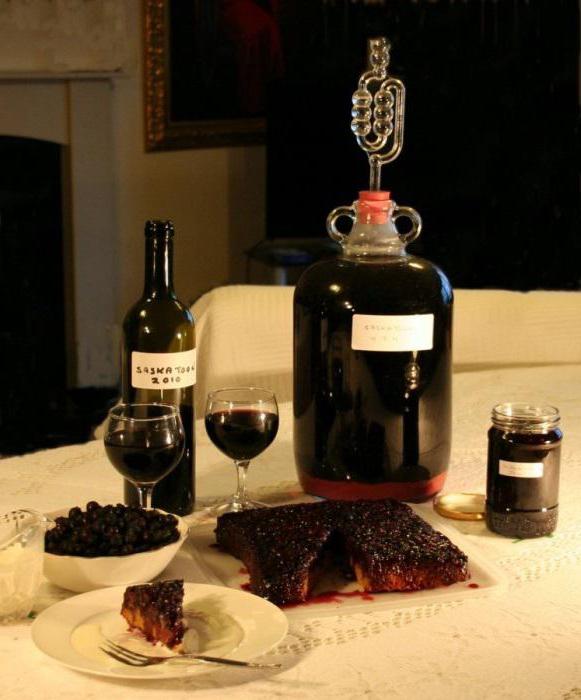

Please note that the fermentation process must begin within five days. If this does not happen, then you need to add the leaven. To prepare it, combine one glass of water and two glasses of berries, mashed with sugar (200 g). Leave the mixture for five days, and only then add to the bottle of wine.
Interesting Facts
- some varieties grow up to 18 meters;
- if you eat a kilogram of berries at a time, you can fall asleep;
- dried berries are stored for up to 2 years;
- irga is one of the most beautiful ornamental plants;
- according to scientists, the scientific name "amelanchier" has a Celtic origin, and the name "irga" is Mongolian and translates as "a plant with very hard wood";
- the fruits of a plant from the point of view of botany are not berries at all, but small apples;
- in Canada, irgu is grown mainly for winemaking.


Preparation of the selected area
We have found a convenient place, we are proceeding to its careful organization.
Let's get acquainted with the important stages:
- - planning to acquire a shrub in the fall, we begin all preparation activities in the summer. If in spring, then in autumn, respectively;
- - at the selected place, mark a circle with a diameter of one meter. Placing several bushes, leave a distance of at least 1.5 meters between them;
- - we clear the "marked circle" from weeds. Without leaving roots from it, we dig up the soil to a depth of at least 30 cm.Then, covering the place with a black film, we leave it until planting, regularly taking measures to destroy weeds under it
Tincture
Continuing the topic of alcohol, we offer you another recipe - tinctures. Fill a three-quarters bottle with berries and fill it with vodka. We insist in a dark room for two days.
Then we filter the liquid, discard the old berries and add fresh ones, which should fill half the volume. We leave it for another two days - and the tincture is ready.
Irga goes very well with black currant, which can replace a small part of the berries. In this case, the drink will turn out to be sour.
Choosing a convenient place
- The main conditions for choosing a place is an open sunny space with protection from cold winds.
- Soil composition is an important criterion for crop growth. Grows well on sandy loam or loamy soil.
- In the presence of heavy, clayey soil, we make it "soft" by adding coarse river sand when digging.
- To increase the fertile properties, we use humus or compost.
We avoid areas with the presence of groundwater close to the surface. This is important as the roots of the shrub go very deep into the soil. Therefore, an abundance of water can lead to rotting of the roots, which adversely affects its growth, up to its termination.
You can plant a culture on a small hill.


